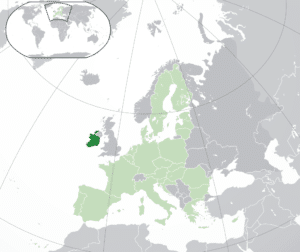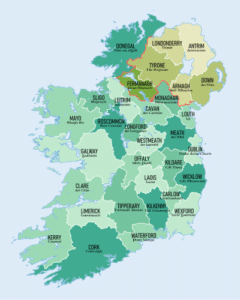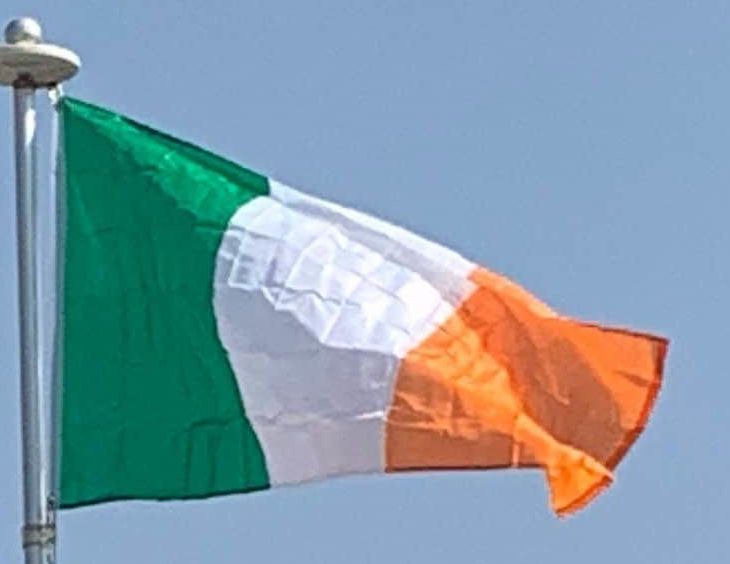Introduction:
Ireland, also known as the Republic of Ireland, is a country in north-western Europe occupying 26 of 32 counties of the island of Ireland. The capital and largest city is Dublin, which is located on the eastern side of the island. Around 40% of the country’s population of 4.9 million people resides in the greater Dublin area. The sovereign state shares its only land border with Northern Ireland which is part of the United Kingdom. It is otherwise surrounded by the Atlantic Ocean, with the Celtic Sea to the south, St George’s Channel to the south-east, and the Irish Sea to the east. It is a unitary, parliamentary republic. The legislature, the Oireachtas, consists of a lower house, Dáil Éireann, an upper house, Seanad Éireann, and an elected President (Uachtarán) who serves as the largely ceremonial head of state, but with some important powers and duties. The head of government is the Taoiseach (Prime Minister, literally ‘Chief’, a title not used in English), who is elected by the Dáil and appointed by the President; the Taoiseach in turn appoints other government ministers.

The state was created as the Irish Free State in 1922 as a result of the Anglo-Irish Treaty. It had the status of Dominion until 1937 when a new constitution was adopted, in which the state was named “Ireland” and effectively became a republic, with an elected non-executive president as head of state. It was officially declared a republic in 1949, following the Republic of Ireland Act 1948. Ireland became a member of the United Nations in December 1955. It joined the European Economic Community (EEC), the predecessor of the European Union, in 1973. The state had no formal relations with Northern Ireland for most of the twentieth century, but during the 1980s and 1990s the British and Irish governments worked with the Northern Ireland parties towards a resolution to “the Troubles“. Since the signing of the Good Friday Agreement in 1998, the Irish government and Northern Ireland Executive have co-operated on a number of policy areas under the North-South Ministerial Council created by the Agreement.

Ireland ranks among the top ten wealthiest countries in the world in terms of GDP per capita, and as the tenth most prosperous country in the world according to The Legatum Prosperity Index 2015. After joining the EEC, Ireland enacted a series of liberal economic policies that resulted in rapid economic growth. The country achieved considerable prosperity between the years of 1995 and 2007, which became known as the Celtic Tiger period. This was halted by an unprecedented financial crisis that began in 2008, in conjunction with the concurrent global economic crash. However, as the Irish economy was the fastest growing in the EU in 2015, Ireland is again quickly ascending league tables comparing wealth and prosperity internationally. For example, in 2019, Ireland was ranked third most developed country in the world by the United Nations Human Development Index. It also performs well in several national performance metrics, including freedom of the press, economic freedom and civil liberties. Ireland is a member of the European Union and is a founding member of the Council of Europe and the OECD. The Irish government has followed a policy of military neutrality through non-alignment since immediately prior to World War II and the country is consequently not a member of NATO, although it is a member of Partnership for Peace and aspects of PESCO.
History:
Prehistoric Ireland:
During the last glacial period, and until about 10,000 BC, most of Ireland was periodically covered in ice. Sea levels were lower and Ireland, like Great Britain, formed part of continental Europe. By 16,000 BC, rising sea levels caused by ice melting caused Ireland to become separated from Great Britain. Later, around 6000 BC, Great Britain became separated from continental Europe. The earliest evidence of human presence in Ireland is dated at 10,500 BC, demonstrated by a butchered bear bone found in a cave in County Clare. By about 8000 BC, more sustained occupation of the island has been shown, with evidence for Mesolithic communities around the island.
